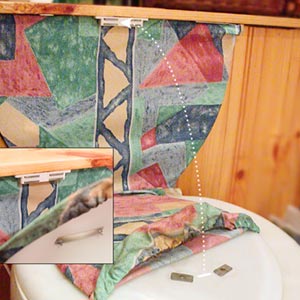|
Artemy Lebedev
§ 95. Design orderNovember 1, 2002 |
|
How is good design born? Either by accident or intent. As the nature of the accidental is of no account for “Mandership” readers, I suggest that we talk this time about the ways of creating good design deliberately. |
|
To begin with, we’ll need a head. Its major task is thinking. The simplest way to get the head thinking is giving it a problem. If a customer comes to a designer and says “I need a logo” or “I need an illustration for a page”, or “I want a TV set”, then it’s as easy as that: a problem well stated is a problem half-solved. Getting it done is all that remains (of course, provided that the head is essentially not empty). |
|
Thinking up a problem on one’s own is a lot harder. But nothing should be impossible for a designer, so thinking up a problem should be stated as a problem. And then it will be solved. |
|
One of the most effective and productive ways of creating good design is analyzing one’s own or somebody else’s mistakes. By studying “successful” design you are unlikely to have the opportunity to learn how mistakes are to be avoided in the future. What is today believed to be success may be just a big mistake. |
See also: Henry Petroski, Design Paradigms: Case Histories of Error and Judgment in Engineering |
|
But if you start with exploring mistakes, you’ll get a chance to steer clear of them at least. That’s the very reason why giving “good” examples is risky: the vast majority of designers rush to duplicate everything given as a sample. As a result, the mistakes the “good” sample was born with breed like flies and we get what we are seeing around us today: blind adherence to the same tricks without a glimpse of independent ideas amid a frenzy of imitation. |
|
Let us now return to the ways of creating good design. A careful ear is apt to hear a salvo of voices begging for help from all around. These are people dying to order design. In some cases small efforts may bring comfort to those yearning to have something designed for them, sometimes finding a solution may take years. |
|
In its lifetime a design order has four stages to pass. The first stage is when a situation arises that needs to be addressed by a designer who finds a solution. The second stage is when ordinary people wake up to the problem’s existence. The third stage is when people come out strong and tackle the problem before a designer arrives. The fourth stage is finally a design solution. After the fourth stage everything certainly rolls back to where it started, which is called progress. |
|
As we said, at the first stage a situation occurs when a design solution is needed. What you can see at the picture below is a smoking corner in the corridor of the Mission Control Center (MCC) headquartered in the city of Korolev: |
 MCC, Korolev, 2002 |
|
At the second stage ordinary people become aware of the problem. In case of the MCC smoking corner it might have been the note “Your are kindly requested not to crush out cigarettes against the walls”. Here’s a typical example of the second stage of the design order’s lifecycle: |

“Ladies and gentlemen, please don’t slam the door” |
|
Below are another two examples of what happens at the second stage. Try to guess what made people post the notes like these. |

“To call the elevator, press the upper black button. In the cabin select the required floor and press “Go” button.” |

“1. Close the door |
|
At the third stage laymen come up with an impromptu solution before a designer arrives. Here’s a metal hook, for instance. Its job is keeping the toilet seat raised as it can’t stay upright: |
 Toilet at the KnAM Theater, Komsomolsk-on-Amur, 2002 |
|
There’s another example of the third stage: a lid of the toilet seat that’s kept up by metal plates and a magnet on the wall. This solution fails to eliminate the problem of the ever-prostrate toilet seat, but probably suits well for a female dorm. |
 Toilet at designer M.’s, Moscow, 2002 |
|
At the fourth stage, as far as a toilet seat is concerned, a design solution would be a toilet bowl model in which the space between the tank and the seat is broad enough to allow the user to lift both the lid and the seat and leave them standing by themselves. But some may go farther, as did the designers of the British firm Twyford. They devised a super-john able to determine the user’s sex by his/her voice and accordingly convert itself into a urinal, if need be. This makes it comfortable for all (I guess): |
Sanitary vision of the future, Chennai Online |
 Twyford, VIP (versatile interactive pan) model |
|
At the next photo the results of the fourth stage of a design order’s lifecycle are laid bare. This is a cluster of street signs in Moscow which are supposed to give a clue and help you keep your bearings. Designers failed to accomplish the navigation task (try to figure out how you can get to the air ticket vendor, for example,—the top yellow sign on the right hand side). |
 Corner of the Gazetny Lane and the Tverskaya Street, Moscow, 2002 |
|
And here’s a Berlin direction sign. With this sign, designers did their best not to repeat the mistakes made by their Moscow counterparts, but the outcome is lackluster nevertheless. Some people living in Berlin are good at deciphering the different length of arrows, but a normal person would be put into a state of bewilderment in sync with the labyrinth of arrows shown on the sign: |
 Wilhelmstrasse, Berlin, 2002 |
|
Once you are through the fourth stage, a design order is oftentimes filed again. In this event designers customarily set out to solve the problem starting with the fourth stage, which is wrong. You have to return to the first stage even if there’s not a vestige of it left. It is called “studying the background of the issue”. It is the only way you can steer clear of other people’s mistakes. |
|
To see mistakes, just keep watching. |
|
|
|